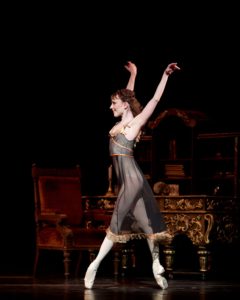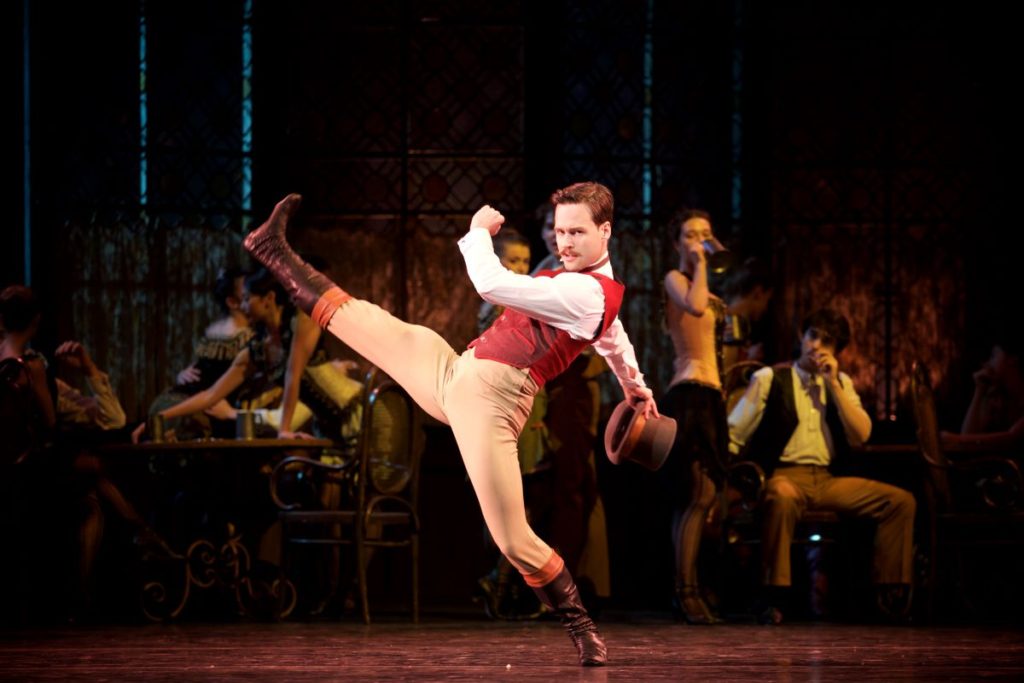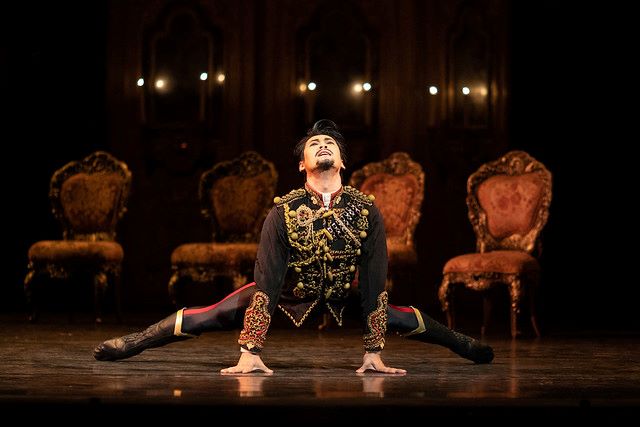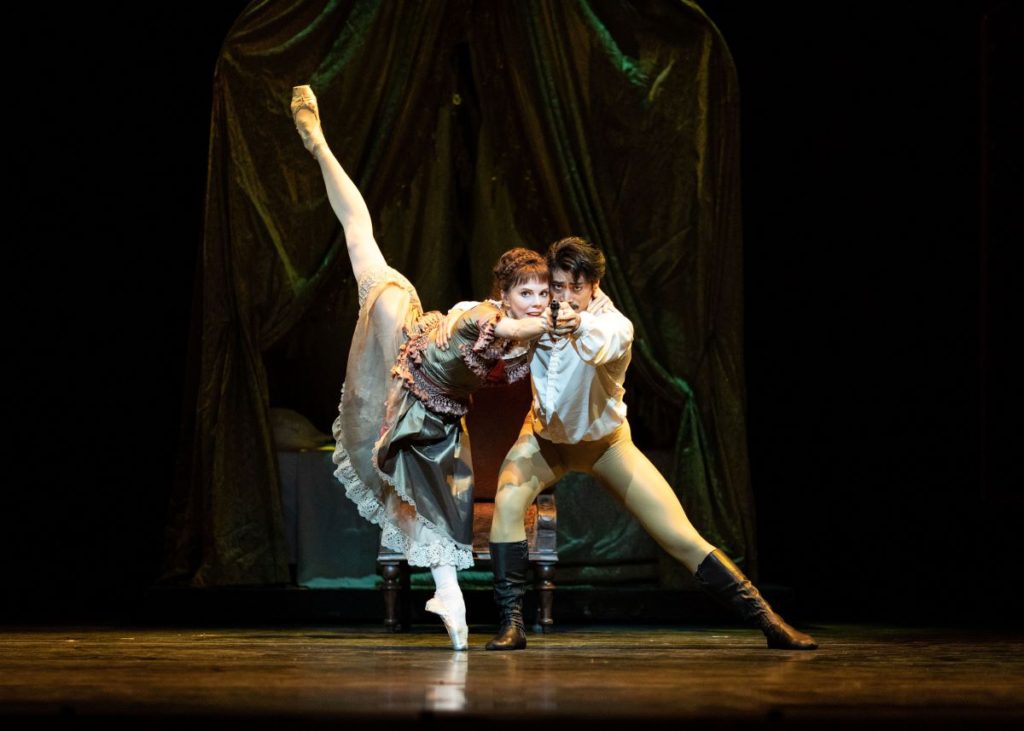THE ROYAL BALLET TAKES ON ROYAL INTRIGUE
Considering we couldn’t tell most characters from each other at last night’s opening of Royal Opera Ballet’s Mayerling, a good time was had by all. With Kenneth McMillan’s inventive and daring 1978 choreography, Koen Kessels’ live orchestra’s thrilling rendition of Liszt’s exquisite music (arranged and orchestrated by John Lanchbery), Nicholas Georgiadis’s texture-rich costumes, and a battery of beautiful ballet barnstormers, this long three-act evening offers balletomanes and beginners alike something to love. But you only have two more chances to see this splendid work the at Dorothy Chandler Pavilion through Sunday
McMillan offers his trademark narrative ballet style; an accessible fusion of classical, character, and strong-core dancing. This is McMillan’s account of the true-life story of Rudolf, heir apparent to the throne of Austria-Hungary, and his purported mental illness and disreputable sexual proclivities (mistresses are confusingly handed over like batons in a relay race in Mayerling). In 1889, at the age of 30, the married prince shot and killed his teenage mistress, Baroness Mary Vetsera, at his Mayerling hunting lodge just before turning the gun on himself. That’s our story, although it’s  notable that the murder-suicide made international news, adding to a series of disasters which would further destabilize the Hapsburg empire, leading to the assassination of Rudolf’s first cousin, Archduke Franz Ferdinand, an impetus to the start of WWI and collapse of the Austro-Hungarian Empire (another ballet?).
notable that the murder-suicide made international news, adding to a series of disasters which would further destabilize the Hapsburg empire, leading to the assassination of Rudolf’s first cousin, Archduke Franz Ferdinand, an impetus to the start of WWI and collapse of the Austro-Hungarian Empire (another ballet?).
But let’s get the bad news out of the way first: While there is a slew of character-defining movement, befuddlement abounds as to which mistress is which, and, believe it or not, confusion as to whether Rudolf is dancing with his mom, his wife, an old lover, or a new lover (he has SEVEN pas de deux in all). Then the mom has a lover, an old lover introduces him to a new lover, and a sister comes into play. Some story-splicing could have helped, but that ain’t gonna happen. Certainly facial expressions are exquisite, but emotion doesn’t tell the whole story. Our bewilderment isn’t helped by Georgiadis’s wigs, which go from brown curls to chestnut curls and back again, and at one point from straight hair for Mary Vetsera to short curls in the next. And here’s the kicker: The program’s synopsis is ridiculously just a few sentences; definitely read a detailed synopsis before you attend.
Everything is so opulent and gorgeous, and all of the women so completely lissome — with luxuriously lengthy legs, nimble knees, and arresting arches — that bemusement doesn’t much matter, especially in the opening marriage scene and the terrific tavern scene in which most everybody is a either a whore or a soldier, so it’s easy to tell them apart. The latter also has the most exciting movement for the boys. Cesar Corrales is magnificent as one of Rudolf’s friends (or was he a guard? or a friend of a guard? or… oh, never mind); Corrales simply commands the stage with a bravura that’s infectious. The standout is Alexander Campbell as Rudolf’s Cab-Driver and Entertainer (he would be called a “fool” if he were drawn by Shakespeare); his thick muscular legs and rear defy any previous belief about the standard ballet dancer: while he seems heavy with brawn, his airborne performance stuns, and he rightfully received the best applause for a male dancer.
Ryoichi Hirano’s performance as Rudolf is not quite the standout one would expect — and it’s tough to parse just why. Tall and stately, Hirano is perfectly princely but a bit reserved; his lifts seemed a bit of a challenge, and he was off-center in some turns. Having never seen this ballet before, it may be possible that MacMillan designed the role with a wobble or two — but his madness always looks like a really bad headache. Aside from the lifts, he has wonderful chemistry with all of his women, and for someone who must be on stage for most of the evening, he definitely has the strength — which he uses to savage extremes in his breakdown scene. Especially lovely is the tempestuous pas de deux with Francesca Hayward as his unwanted wife, Stephanie, and that super-sexy carnal-copia with superstar Maria Osipova, who offers an underplayed but possessed Mary with a sort of wacky youthfulness. Know that roles are triple-cast, and Osipova only performs last night. Don’t let that stop you. This company remains royal, indeed.
photos by Alice Pennefather
Mayerling
The Royal Ballet
Glorya Kaufman Presents Dance at the Music Center
Dorothy Chandler Pavilion, 135 N. Grand Ave
ends on July 7, 2019
for tickets, call 213.972.0711 or visit Music Center




